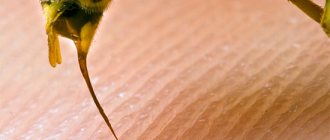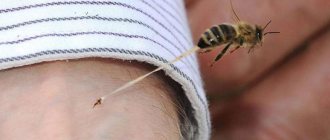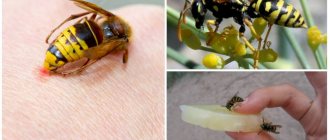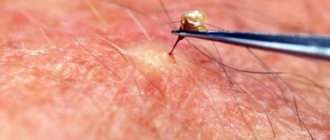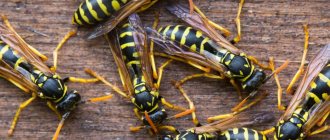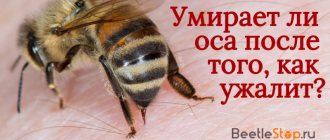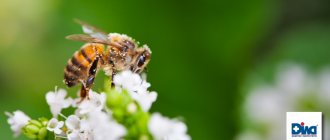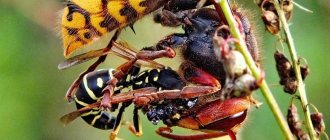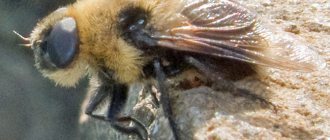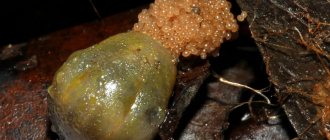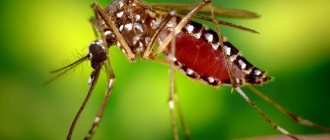All members of the family of these spiders (31 species) have toxic venom, so their bite causes a strong response and in some cases can be fatal. Only eight species live in Eurasia.
In this article, the reader will learn how dangerous a black widow bite is, as well as what measures should be taken in such a case.
Black Widow
What does a karakurt spider look like?
The arthropod belongs to the family of web spiders, the genus of black widows and the species of karakurt. These spiders have lived on the planet for more than 300 million years, and during this time their appearance has remained virtually unchanged, although they used to have a rather long tail, which they no longer have.
Karakurts exhibit strong sexual dimorphism, that is, females are noticeably different from males. They are larger, their size is up to 2 cm, while males are less than 1 cm. Their body and limbs are black, there are red spots on the belly, which may have a not too bright white edge. The spots on the abdomen disappear when the spider reaches sexual maturity, when it becomes completely black.
The karakurt has 4 pairs of paws, with the first and last pairs being long and the middle pairs being short. There are hairs on the legs, thanks to which the karakurt spider does not stick to the web and moves freely along it.
Karakurt black widows are prolific. Every 9 to 12 years there is an outbreak of fertility and a real invasion of spiders. This happened in 2022. The increase in population is often associated with an increase in the number of locusts. This is one of the main types of food for black widows. That is, as the amount of food increases, more spiders survive.
The mating season of these arthropods occurs in the summer. At this time, spider venom becomes especially toxic. After mating, the female usually eats the male and then lays eggs. Even if she does not eat him, the male will die in any case, since he stops feeding immediately after reaching maturity. The female lays eggs in cocoons and then dies. One female karakurt lays from five to twelve cocoons with eggs, in each cocoon from a couple of hundred to two thousand eggs, sometimes there are even more. Spiders are born in cocoons and remain in them until spring, until the weather warms up. At first they have enough nutrients that are in the cocoon, but then, when there is not enough food, they kill and eat each other. By spring, the strongest survive in the cocoon, and they emerge into the light.
Karakurts are born almost transparent, after the first molt they darken noticeably and acquire three rows of light spots on the abdomen. With the next molt, the body becomes darker and the spots turn red. In total, during the maturation period, the spider goes through from six to nine moults, their number and frequency depend on the amount of available food. Females develop faster and more actively. After molting and reaching sexual maturity, males stop feeding with the same activity and go in search of females.
Tarantula
Tarantulas are a genus of spiders from the wolf spider family. These are large poisonous spiders, averaging 10 cm in size. Tarantulas live in steppes, deserts and semi-deserts.
The main time of activity and hunting is after sunset. The spider does not weave hunting nets, so a poisonous bite is the only way to hunt. Most often, tarantulas feed on large insects.
Tarantula: Wikipedia
A tarantula bite is not fatal to a healthy adult, but does cause swelling. If a tarantula attacks, consult a doctor. This type of spider can easily be confused with the more dangerous larger spiders.
The Tarantella dance is named after tarantulas: it was believed that only energetic dance movements could save a person from the serious consequences of an arthropod bite.
Where in Russia does the karakurt live?
Habitat: steppes, forest-steppes, semi-deserts. The karakurt spider lives in warm climates. Poisonous spiders live in ravines, abandoned areas, arable land and pastures. They can also live in rodent burrows, first killing them with poison and occupying their home. Cracks in walls, crevices in the ground and other secluded places are suitable for them.
As the climate warms, their habitat is expanding. Dangerous arthropods now live in places where they had never been heard of before, for example, in the Crimea. Traditionally, the Astrakhan and Volgograd regions suffer from spiders. Also, black widows live not on the coast of the Black, Azov, and Caspian seas, in the Lower Volga region, Kazakhstan, Central Asia, and Altai.
They can migrate to new lands, but do not live in areas where it is cold and very wet. They also do not live in dense vegetation or in areas where it is impossible to hide from the scorching sun.
The most poisonous spiders in the world TOP 10. Video (00:04:00)
Rating: The deadliest spiders in the world The most poisonous spider in the world, according to the Guinness Book of Records, is the “Brazilian wandering spider.” The spider got its name because it does not sit in one place and does not weave webs, but actively moves in search of food. Another extremely dangerous spider is the Black Widow, or in our language Karakurt, which can be found in the Caucasus and Crimea. I present to your attention the rating of the 10 most poisonous and dangerous spiders on planet Earth 10. Yellow spider Sak (Cheiracanthium Punctorium) 9. Fringed Ornamental Tarantula 8. Chinese tarantula Chinese Bird Spider 7. Mouse Spider 6. Brown or Chilean spider recluse Brown and Chilean Recluse Spider 5. Redback spider 4. Black widow (Karakurt) 3. Sydney funnel-web spider 2. Six-eyed sand spider. 1. Brazilian wandering spider
Karakurt poison
Arthropods feed on insects that get caught in the web. Both females and males weave it, but females do it better and stronger. The web is very sticky; once an insect gets into it, it has no chance of getting out. The karakurt spider, having discovered the victim, injects poison into it, which softens all the insides. When this happens, the spider simply sucks out the contents. The spider's food includes flies, beetles, mosquitoes, locusts, horseflies, grasshoppers, caterpillars and other insects or arthropods, as well as snakes and lizards. If small animals get caught in the web, the spider will eat them too.
The poison is produced by glands located in the cephalothorax. They are connected by ducts with sharp teeth on the upper jaws. Venom glands have a very active muscular layer. The spider sharply contracts these muscles, so that the poison is injected into the victim instantly.
The poison of karakurt is toxalbumin. It is neurotoxic and spreads rapidly through the lymphatic system. It is 15 times more toxic than rattlesnake venom.
Karakurt poison is deadly for cows, horses, and camels. This is not to say that a black widow’s bite is dangerous for absolutely everyone; for example, dogs tolerate it relatively easily. The poison is dangerous for humans, and spiders are toxic from the moment they are born.
The natural enemies of karakurts are herd animals. They simply trample spiders and cocoons with their eggs. Also dangerous for them are sphex wasps, whose poison is no less toxic. Hedgehogs are resistant to black widow venom, which is why they eat them. Karakurts also do not pose a danger to pigs, goats, and sheep.
Black widow diet
Spiders often build homes near their lands. They have enough food here, they help fight pests. Arthropods feed on:
- cockroaches;
- beetles;
- flies;
- mosquitoes;
- grasshoppers;
- caterpillars;
- moths;
- fire ants;
- termites.
Usually these are victims caught in the web. In rare cases, a spider can eat a mouse, lizard, snake, or scorpion.
Often the black widow hangs upside down at the level of the middle of the web, waiting for prey. Next, the spider injects poison, poisoning the victim and wraps it in silk. After this, it pierces small holes on the body of the prey and sucks out the liquid.
The black widow has poor vision and recognizes prey by vibration.
Netting
Spiders are not known for weaving beautiful webs. The web is presented in the form of an elastic weave of coarse, sticky, thick threads. It consists of 3 rows:
- supporting threads at the top;
- ball weaves of threads in the center;
- vertical threads of traps with sticky liquid attached to the surface of the earth.
Symptoms of a karakurt bite
After a black widow bite, a strong, pronounced circling pain appears. Most often it is felt in the abdomen and lower back. Tension of the abdominal muscles is added to it. The heart also begins to beat faster, shortness of breath and headache appear. Very often a person feels sick, vomits, and breaks into a sweat.
Approximately 20 - 30 minutes after the bite, the condition changes to chills, pain appears in the chest, as well as in the limbs. The body is burning. This is accompanied by severe weakness. In some cases, severe drooling begins, and the person cannot swallow saliva.
After three hours, convulsions begin, followed by nausea and vomiting. After eight hours, profuse sweating begins, the person swells, his eyelids swell, and his face becomes noticeably swollen. After three days, itching and rash may appear all over the body. Then the symptoms begin to slowly subside. Recovery occurs in approximately 7–10 days.
The temperature during spider bites remains normal or rises slightly, no more than 38 degrees.
Habitat
The black widow lives on almost all continents. The exception is Antarctica.
Species ratio
There are 13 species in North and South America, 8 in Eurasia, 8 in Africa, and 3 in Australia.
Distribution in the Russian Federation
In the Russian Federation, spiders settle mainly in the Azov, Black Sea, Astrakhan regions, as well as in Kalmykia.
Meeting point
Spiders prefer dark and untouched places. Favorite spots are small holes and the underside of ledges. They only hide indoors from frost or drought.
First aid and treatment for karakurt bites
Help must be provided immediately, as the poison spreads throughout the body very quickly. The bite site should be cauterized within two minutes. To do this, do not light the head of the match, apply it to the bite site and only then light it with another match. This is necessary to heat the poison that has entered the skin, but has not yet dispersed through the lymphatic system. The poison penetrates no deeper than 0.5 mm and disintegrates if heated. But this method is painful and dangerous. In addition, there is no serious scientific evidence or medical reason to believe that the poison is actually destroyed when heated.
It can also be destroyed if an aqueous solution of potassium permanganate 0.1% in an amount of 3-5 ml is injected under the skin at the site of the bite. You can also make a lotion with this drug.
You cannot apply tourniquets to the limbs, as necrosis may occur, and after removing the tourniquet, the decay products will poison the body even more.
It is also impossible to cut the skin near the wound, since a secondary infection can develop through the cuts.
Relieve pain with compresses, applying cold objects or lotions.
Treatment is carried out with serum. A special serum is diluted in saline and administered to the victim. The problem is that the serum is produced by one manufacturer, it is expensive, and most hospitals simply cannot have it in their arsenal. But despite this, after being bitten by a black widow, a person must be taken to the hospital to relieve the symptoms of intoxication. At home, drinking plenty of fluids is recommended. If there is chills and muscle tension, the person is warmed up. Painkillers are used.
Prevention
The karakurt spider is dangerous to humans and livestock. They do not live near people, preferring abandoned and secluded places. A person may encounter a spider while hiking. To avoid being bitten, you need to take normal precautions. Do not walk barefoot on the ground or grass. Don't pitch your tent where spiders might be. Their presence is indicated by burrows of small rodents, covered with cobwebs, or simply cobwebs on the ground. Don't turn over stones. If you take off your shoes, you need to shake them out before putting them on. The same should be done with sleeping bags if they were left on the ground or in a tent.
Despite the fact that spiders avoid living near people, they can also appear in a summer cottage or garden plot. If there is abandoned land near the site, if there is a landfill or piles of garbage nearby, then it is likely that there are spiders there. If you leave shoes in such an area for some time, a spider can climb into them, which, of course, will bite if disturbed.
If you are known to have black widows in your area, you need to be extremely careful. Do not go outside without shoes and clothes, do not stir up grass or hay with your bare hands. In a word, do not allow the spider to get on open skin. They have a rather weak mouthparts, so they cannot bite through clothing. But if it gets on the skin, they bite and inject poison right there.
Karakurts themselves do not attack humans; they do not attack or jump on people. But it’s not worth going to where they are.
Black widow lifestyle
Male black widow.
In arthropods, activity occurs at night. During the day they can hide in garages, outbuildings, sheds, basements, and mouse holes.
Spiders are not aggressive . They are able to attack when they are in danger. When caught in a trap, they pretend to be dead or hide. They prefer to avoid people, but in case of danger they bite without warning.
Why does the male have such a fate?
The female spends her entire life building the web, patching it and completing it. Males have only one role - to fertilize the female. After the process, he dies like a hero - the female eats him. Moreover, she can start eating even during the mating process.
It all happens like this:
- The female builds a web, saturates it with her pheromones, which all males hear.
Male and female black widow.
- The male senses this, tries to tear the web and mask the smell with his own, so as not to attract competitors.
- The female tracks him down and catches him, and begins to kill him. In a good situation for the male, he manages to impregnate the young lady.
- It happens that the male dies before the mating process.
How to get rid of karakurts
Karakurts can settle next to humans in stables, barns, woodsheds, and garages. They also often live in trash heaps. To ensure that the area is not attractive to spiders, it is necessary to promptly get rid of debris and clear debris. It is necessary to regularly inspect the site, yard, and outbuildings. Remove cut grass in a timely manner. If a web is found, it must be set on fire and the spiders must be killed, taking precautions.
Previously, to mass exterminate black widows, shepherds sent a herd to pasture so that the animals would trample down the spiders and cocoons with their eggs. Also, when spiders invaded, they practiced burning the territory.
Nowadays insectoacaricides are used. A proven drug that is registered and approved for use in our country and is effective against karakurts is Medilis-Tsiper. If the site is located in the habitat of karakurt spiders, it makes sense to treat the area. To do this, the drug is diluted in the proportions specified by the manufacturer and, after preparing the working solution, it is sprayed with special equipment. You can also apply the drug by wiping surfaces. The product lasts for up to a month and a half, and destroys not only spiders, but also ticks and other harmful insects or arthropods.
Diagnostics
There are no tests to diagnose karakurt bites or signs of latrodesism. The diagnosis is based on information, what the victim says, and symptoms. Pathognomonic signs, such as local sweating, piloerection, indicate the presence of envenomation.
Unlike the brown recluse, widows are easily identified by most people.
The diagnosis is obvious in most victims who report exposure to the spider. However, without an insect, or due to ignorance, the diagnosis is missed.
Find out more 10 deadliest, most poisonous jellyfish in the world
The symptoms coincide with a number of other serious clinical syndromes, such as tetanus, acute abdomen. Blood counts are usually not important but may be necessary to detect myocarditis and dehydration from vomiting.
